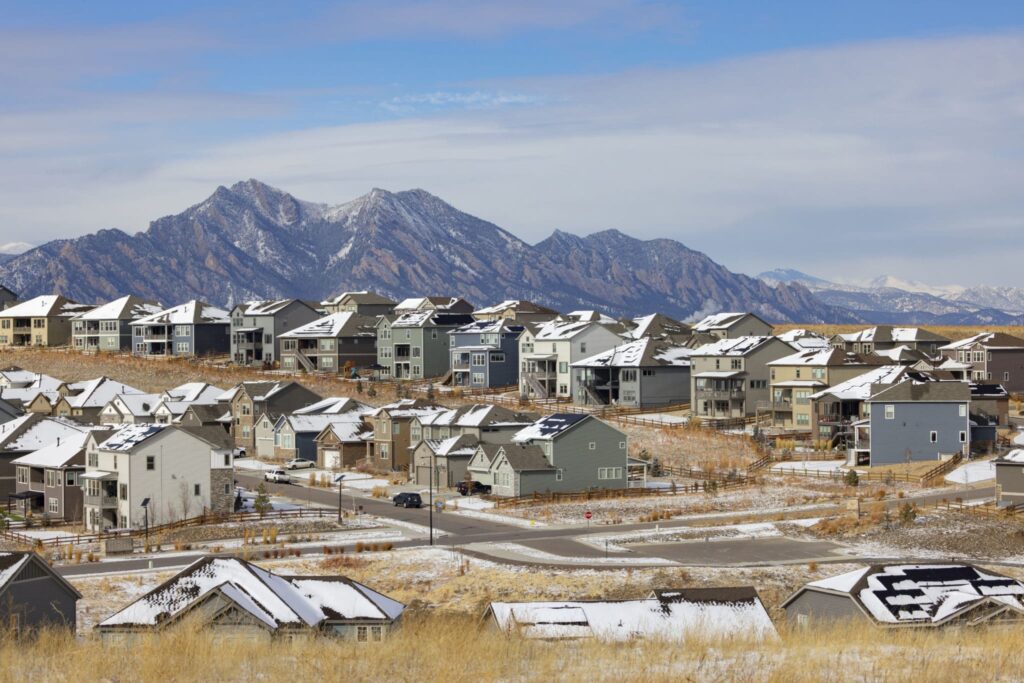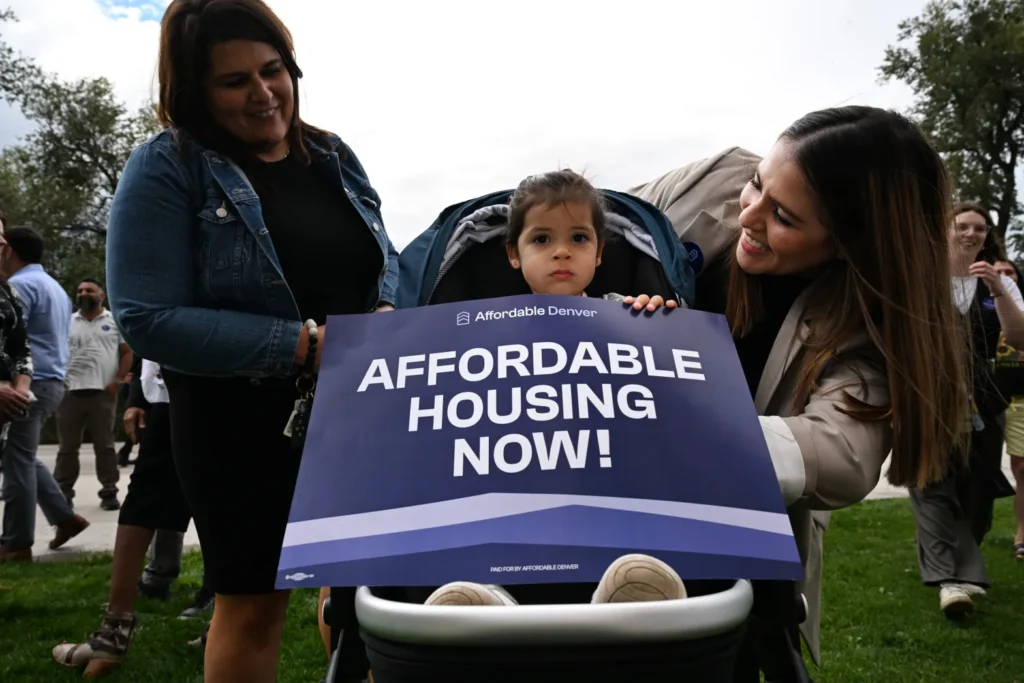
By Terrance Carroll
Published March 16, 2025
Colorado is at a breaking point. Skyrocketing home prices and rising rents are squeezing working families, turning housing from a basic necessity into an unaffordable luxury. Too many Coloradans are being forced to make impossible choices — between rent and groceries, between keeping the lights on and saving for the future.
The numbers paint an alarming picture. More households are spending over 30% of their income on housing, and for low-income renters, 76% are paying more than half of what they earn just to keep a roof over their heads. With over 773,000 Coloradans relying on rental housing and demand continuing to rise, the state must act before more families are pushed past the brink.
But it doesn’t have to be this way. Smart, people-centered housing policies can make Colorado a place where everyone has a fair shot at a safe, affordable home. The Colorado Legislature has an opportunity to move forward with real solutions that will increase supply — not merely penalize landlords and renters with policies that have proven unsuccessful elsewhere.
Increasing housing supply works to bring prices down. In Denver, for example, we are starting to see this in the rental market. Last year, 20,000 new apartments were brought to market, and this increase in supply caused rents to drop year over year for only the third time since 1990. There is still much more that needs to be done; to meet growing demand, Colorado will need to build 8,000 apartment homes annually through 2030 — making it clear that decisive action can’t wait.
Of course, the type of housing being built matters, too. There is a pressing need for more of what is known as “middle market” housing — smaller units such as condominiums that are affordable for renters and provide a crucial bridge to home ownership.
The lgislature should take solutions proven to increase supply, and run with them. Three bills that have been introduced would allow the state to do just that.
First, the “stairwell” bill, HB25-1273, backed by Gov. Jared Polis, would allow developers to build more housing on the same footprint of land by easing restrictions on stairwell placement.
The bill simply modifies building codes to allow for the construction of a residential building of up to five stories with a single stairwell. The requirement to include multiple stairwells in smaller buildings makes such buildings so cost ineffective to construct that it forces developers to focus instead on massive new complexes that attract higher-income renters — but leave lower-income individuals with fewer options. This simple but effective reform removes a key barrier to constructing midsized housing that fits seamlessly into existing neighborhoods. By allowing for smarter use of limited land, this bill will open the door to more diverse housing options, helping to increase supply and bring down costs.
Many building codes and zoning regulations are necessary, of course; but some, like the stairwell requirement, which were initially put in place to address fire hazards, are outdated and just add unnecessary cost.
Modern-day technology such as smoke and heat detectors and fire suppression systems offer better protection now than they did when the multiple-stairway requirement was brought in.
Just as we no longer require external fire escapes, this bill offers an excellent example of how to roll back costly regulation without compromising health or safety, and in so doing increase the availability of affordable rental units.
The “Yes in God’s Backyard” bill would allow faith-based organizations and educational institutions to develop housing on vacant land they already own. It’s an easy lever for Colorado legislators to pull in a year when financial resources are limited. It’s especially important to consider when only 20% of homes for sale are affordable for a teacher earning a median salary in their district and a significant number of Coloradans are rent-burdened.
Faith-based organizations and educational institutions like school districts have significant quantities of underutilized land, which is primed for infill building. Unfortunately, rigid zoning laws often prevent housing projects from moving forward on this land. These institutions also often have existing relationships with nonprofit developers.
By allowing construction on vacant property, this bill will create opportunities for affordable housing in communities that desperately need it. The legislation will streamline the approval process for residential developments on land owned by these institutions, removing unnecessary red tape that hinders much-needed housing projects.
Another crucial reform targets outdated construction defect laws that have stifled the development of affordable condominiums. These well-intentioned laws, originally designed to protect homebuyers, have made it too risky and expensive for developers to build “middle market” housing like condos and townhomes.
Colorado’s construction defect laws have prioritized litigation over other avenues of remediation, and in so doing have created an overly litigious environment that has increased risk to developers and small businesses in the construction industry, by greatly increasing their exposure to liability claims and tort costs.
Accordingly, the enormous liability risk has caused insurance premiums — if even available — to skyrocket. In fact, it is virtually impossible to find liability insurance in Colorado for building middle-market housing, which is a key reason as to why very few, if any, condos have been built here in recent years.
Instead, Colorado’s urban areas are flooded with luxury high-rises that cater to wealthier buyers, leaving working families and first-time homebuyers with few options.
Reforming these liability laws will unlock the potential for more affordable, accessible housing — particularly for seniors looking to downsize and young people hoping to enter the housing market.
Although there are still some necessary amendments needed so the bill meets its goals, HB25-1272 offers a solution, and has bipartisan backing, as well as the support of the governor. The bill does not leave homeowners to the wolves, nor does it refuse to provide a path for correcting actual defects in the construction of homes — but it does offer alternatives to arrive at an equitable outcome, rather than simply defaulting to the most expensive, and most adversarial option of automatically taking it to the courts.
Public policy in Colorado should be about looking for solutions, not fights; especially when those fights so greatly limit housing options for lower income and first-time homebuyers, hoping for their chance at the American Dream.
I know from experience that proposals like these three bills, which make commonsense adjustments to policy as circumstances change over time, help to increase the supply of affordable housing. We also know what policies do not work. Policies that merely seek to punish, penalize or micromanage developers or landlords ultimately deter new building and punish the renters instead. Likewise, rent control has proven to be a failure everywhere it has been tried. Artificially setting rental prices is great in theory, but what happens in reality is it discourages the construction of new housing. When demand outstrips supply, you end up with a shortage. Perversely, a housing shortage often reduces the quality of existing rental housing, because there is less incentive for landlords to maintain rented properties at a high level, since there is less threat of vacancy.
This isn’t just a Colorado problem, nor is Colorado alone in periodically considering rent control as a potential solution. But I urge lawmakers to take a hard look at the evidence, and listen to experts who have seen these policies play out across the country.
In states where rent control has been implemented, it has made housing less affordable by stifling construction and discouraging investment in much-needed housing. Likewise, banning income-based tenant screening might seem like a protective measure, but it could unintentionally lead to more evictions — creating a cycle of vacancies and instability that harms renters and landlords.
Colorado needs to focus on housing solutions that provide results. Building on what we know to work, and by passing these commonsense reforms, Colorado can break down outdated barriers and pave the way for more affordable, diverse housing options, increasing the number of homes on the market, and ultimately improving housing affordability for all.
Terrance Carroll is the former speaker of the Colorado House of Representatives, the first African American to hold that office in Colorado. He is an attorney and a minister.




